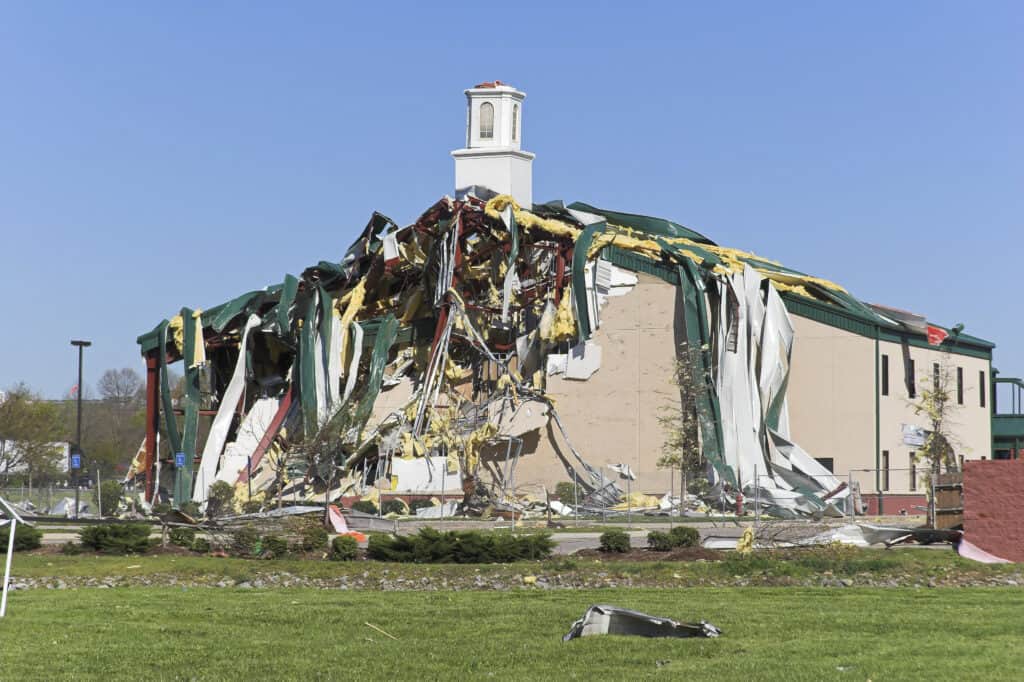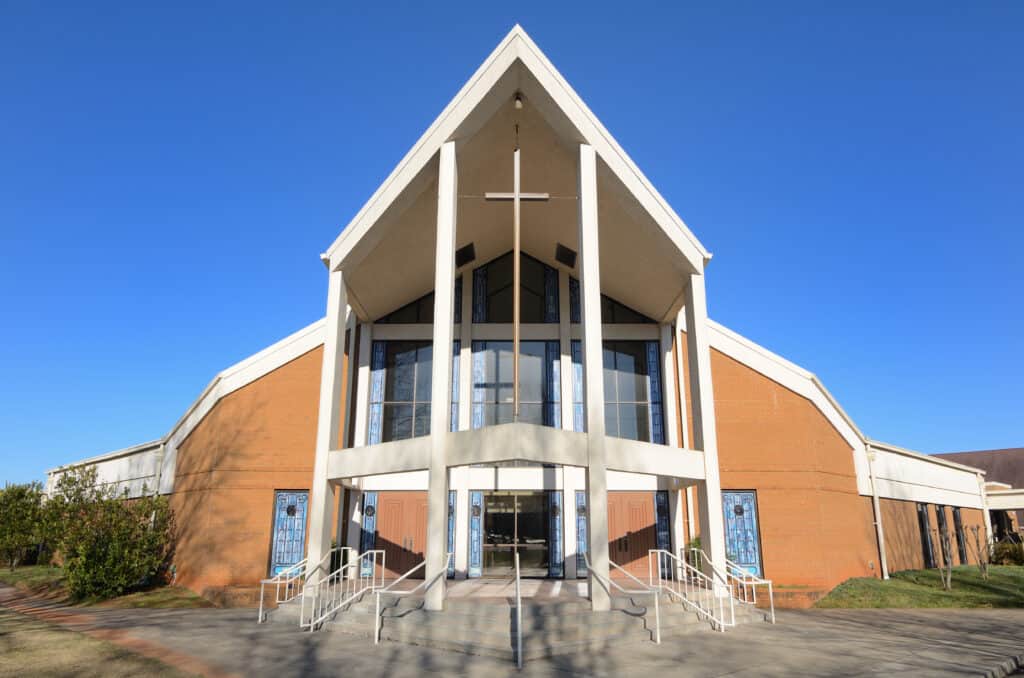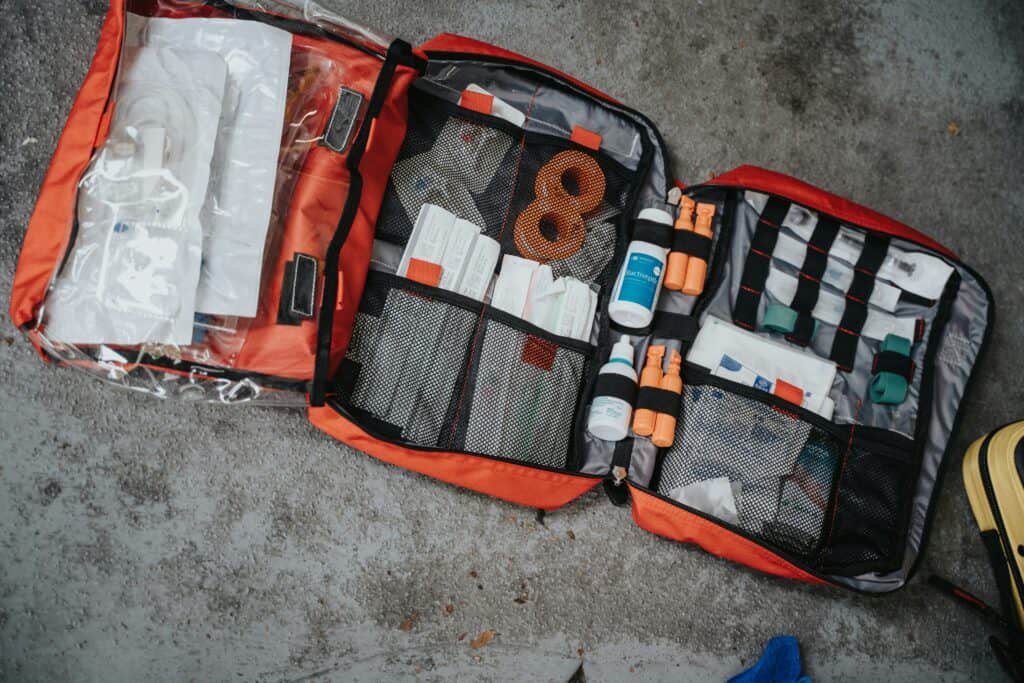Houses of worship play a crucial role in providing spiritual guidance, support, and safety to their members and the community.
As such, establishing and maintaining a robust Emergency Operations Plan (EOP) is essential in ensuring the well-being and protection of congregants and staff in times of crisis.
Developing a comprehensive EOP tailored to the unique needs, resources, and capabilities of a religious institution goes beyond an obligation—it demonstrates a commitment to the safety and preparedness of all who enter its doors.
The Emergency Operations Plan encompasses various aspects, starting with identifying potential risks and hazards, ranging from natural disasters like floods and earthquakes to human-caused incidents such as acts of violence or terrorist attacks.
These identified threats serve as the foundation for developing procedures, communication protocols, and training programs that best prepare staff, volunteers, and congregants.
In addition, collaboration with local emergency management agencies is vital to ensure coordinated efforts and response during emergencies.
Implementing an effective EOP requires continuous evaluation of its effectiveness and adaptability.
This includes regular review and updating of the plan, incorporating lessons learned from real-life incidents or exercises, and sharing best practices with other houses of worship.
Through a proactive and systematic approach to emergency preparedness, religious institutions can help protect their communities and foster an environment of safety, faith, and resilience.
Understanding Emergency Operations Planning for Houses of Worship
Significance of Emergency Operations Plans
Emergency Operations Plans (EOPs) play a crucial role in ensuring the safety and security of houses of worship.
These plans help religious institutions prepare for various threats and hazards, ranging from natural disasters to acts of violence.
By having an EOP in place, a house of worship can:
- Protect its congregation and staff from potential harm
- Minimize property damage during an incident
- Facilitate a faster and more effective response to emergencies
- Enhance the overall resilience of the religious community
Principles of Emergency Operations Planning
There are several key principles that should be considered when developing an emergency operations plan for a house of worship:
- Comprehensive: EOPs should address a wide range of potential threats and hazards, both natural and man-made. This includes considering relevant incidents that have occurred in other houses of worship or within the local community.
- Flexible: Plans should be adaptable to the specific circumstances of an incident, allowing for an effective response regardless of the particular threat or hazard encountered.
- Scalable: EOPs should be designed to work effectively regardless of the size and scope of an emergency, ensuring that they can be easily scaled up or down as needed.
- Collaborative: The development of an EOP should involve input from various stakeholders within the house of worship, including clergy, staff, and members of the congregation. In addition, working closely with local emergency management agencies, first responders, and other community organizations can help to create a more effective and coordinated plan.
By following these principles, houses of worship can create emergency operations plans that provide a strong foundation for responding to any incident that may arise.
This not only enhances the safety and security of their congregations but also helps to promote a sense of community and shared responsibility in the face of potential threats and hazards.
Phases of Emergency Operations Planning
Before an Incident
Before an incident occurs, a house of worship should develop an emergency operations plan to ensure the safety and well-being of their congregation.
This plan should include:
- Identifying potential hazards, such as natural disasters, fires, or active shooter situations.
- Assessing the vulnerability of the building and its occupants.
- Designating emergency evacuation routes and safe areas.
- Implementing procedures for emergency communication and notification.
- Coordinating with local emergency responders and agencies.
Training sessions should be conducted for staff and volunteers, ensuring they are familiar with the plan and their roles during an emergency.
Regular drills help ensure that the plan is effective and well-understood by all involved.
During an Incident
During an incident, the emergency operations plan for a house of worship should be carried out to minimize harm and confusion.
Key steps during this phase include:
- Activating the emergency operations plan: This step is critical for initiating the response actions outlined in the plan.
- Communicate with congregation and staff: Utilize designated communication channels to provide timely updates and instructions to those affected by the incident.
- Accounting for individuals: Establish a process for verifying the location and safety of all staff, volunteers, and congregation members.
- Implementing emergency response procedures: Follow designated evacuation routes, access designated safe areas, and coordinate with emergency responders as necessary.
After an Incident
After an incident, a house of worship must focus on recovery efforts and evaluate the effectiveness of its emergency operations plan.
Key steps in this phase include:
- Assessing the impact: Determine the extent of damages to the building, resources, and congregation members.
- Providing support: Ensure that affected individuals have access to resources such as counseling or financial assistance.
- Coordinating with emergency responders: Work closely with local agencies to address lingering concerns, such as continued safety threats or building inspections.
- Evaluating and revising: Review the emergency operations plan to identify areas for improvement. Make necessary revisions based on lessons learned and new information.
By following these steps before, during, and after an incident, a house of worship can effectively protect its congregation and staff, and minimize the negative impacts of emergencies.
Forming the Planning Team
Roles and Responsibilities
When forming the planning team for Emergency Operations Plans (EOP) for Houses of Worship, it is crucial to clearly outline the roles and responsibilities of each team member.
This will ensure a smooth and efficient planning process.
- Team Leader: Oversees the entire planning process, sets meeting agendas, and ensures communication between all team members.
- Facilitator: Guides discussions, keep meetings on track, and ensures all team members have a chance to contribute.
- Recorder: Takes notes, compiles documentation, and tracks action items for follow-up.
- Subject Matter Experts: Provide specialized knowledge on specific areas, such as facility safety, emergency response, or accessibility.
Inclusion of Community Partners
Involving community partners is an important aspect of the planning process.
These partners may offer valuable resources, expertise, and support during an emergency.
To foster strong relationships with potential community partners, the planning team should:
- Identify potential partners, such as local emergency management agencies, law enforcement, fire departments, or neighboring Houses of Worship.
- Involve these partners early in the planning process, encouraging them to contribute ideas and share relevant experiences.
- Formalize partnerships through Memorandums of Understanding (MOUs) or other agreements, outlining each partner’s roles and responsibilities in the EOP.
- Provide updates and information on the EOP to partners, maintaining communication and collaboration.
By establishing a planning team with clear roles and responsibilities, and engaging community partners early on, a House of Worship can develop a comprehensive and effective Emergency Operations Plan.
This collaborative approach ensures the safety and well-being of congregants, staff, and visitors during an emergency event.
Identifying and Assessing Threats and Hazards

Natural Disasters
Houses of worship should consider various types of natural disasters during the risk assessment process.
These include floods, hurricanes, tornadoes, fires, and earthquakes. Understanding the likelihood and potential impact of these events is crucial in developing effective emergency operations plans.
- Floods: Consider the location’s proximity to bodies of water and historical flood data. Assess the structure’s elevation and take note of any flood mitigation measures in place.
- Hurricanes: Determine the probability of hurricane activity in the area based on historical records. Assess preventive measures, such as shuttering windows and securing loose items.
- Tornadoes: Evaluate the frequency of tornadoes in the region and assess whether the location has proper shelters or safe rooms.
- Fires: Determine the probability of wildfires in the area based on historical records and assess the availability of firefighting resources. Develop evacuation plans and identify safe zones in case of a fire. Consider measures such as clearing vegetation around the structure and implementing fire-resistant building materials.
- Earthquakes: Identify the likelihood of earthquakes based on regional seismic activity. Examine the structure’s seismic resistance and any retrofitting measures.
Acts of Violence
Another essential aspect of threat and hazard identification is assessing the risk of violent acts.
Examples of such acts may include arson, active-shooter incidents, and other forms of violence against the congregants and the property.
- Arson: Assess the likelihood of arson based on local crime rates, the presence of fire hazards, and any history of fires at the house of worship. Evaluate the fire protection systems in place, such as smoke detectors, fire alarms, and sprinklers.
- Active-shooter incidents: Review any prior incidents or threats made against the house of worship. Consider the accessibility of the premises, potential hiding places for attackers, and security measures such as surveillance cameras and access control systems.
For each identified threat and hazard, it is important to gauge the potential impact on the house of worship and its congregation.
Conducting a comprehensive risk assessment helps prioritize efforts and resources to develop an effective emergency operations plan.
Developing Goals and Objectives
An Emergency Operations Plan (EOP) for Houses of Worship should include clear goals and objectives to ensure the safety, security, and well-being of all participants.
These goals and objectives should focus on the key areas of protection and prevention, response, and recovery, aiming to minimize loss of life and property damage.
Protection and Prevention
To effectively protect and prevent potential emergencies, the following objectives should be considered:
- Identify risks: Assess the vulnerabilities and hazards specific to the House of Worship and its surrounding community.
- Enhance security measures: Implement and maintain security systems such as access control, surveillance cameras, and alarm systems.
- Create safety protocols: Establish procedures for reporting suspicious behavior, handling bomb threats, or responding to other emergencies.
- Train staff and volunteers: Offer regular training sessions on general safety, emergency preparedness, and specific security measures.
Response
In the event of an emergency, a comprehensive response plan should include:
- Clear communication channels: Develop a robust system for alerting staff, volunteers, and congregants about emergencies and directing them to take appropriate action.
- Establish designated roles: Assign specific responsibilities to staff and volunteers, including evacuation management, first aid, and liaising with emergency responders.
- Coordinate with local authorities: Collaborate with emergency services and establish a clear line of communication in case of an emergency.
- Develop evacuation plans: Create clear, well-marked evacuation routes and assembly points for congregants.
Recovery
After an emergency occurs, focusing on recovery efforts can minimize long-term negative impacts.
Consider the following objectives:
- Assess damages: Conduct a thorough assessment of the House of Worship’s facilities and determine the extent of damages or losses.
- Create a timeline for recovery: Establish a reasonable timeframe for restoring normal operations, which can include repairs, cleanup efforts, and emotional support for congregants.
- Coordinate with external resources: Communicate and collaborate with insurance providers, construction companies, and other relevant organizations.
- Conduct a debrief: Analyze the effectiveness of the EOP and make any necessary adjustments to improve future preparedness.
Addressing Access and Functional Needs
Elderly and Children
It is essential for Houses of Worship to address the access and functional needs of the elderly and children.
Proper planning should consider the mobility, communication, and medical requirements of these vulnerable groups.
For example, installing ramps or handrails can improve access for the elderly and those with physical disabilities.
While planning for evacuation, ensure that caregivers are assigned to children and the elderly to assist them in exiting the building safely.
Staff and Congregations
To ensure congregations are prepared for emergencies, the House of Worship should actively involve staff in the development of the Emergency Operations Plan.
This includes providing training and conducting regular drills to familiarize staff with their roles during an incident.
Congregants should also be encouraged to participate in emergency preparedness activities to assist with the identification of potential hazards and the development of appropriate response strategies.
By addressing the access and functional needs of all individuals, Houses of Worship will be better equipped to handle emergencies and maintain the safety and well-being of their members.
Implementing and Maintaining the Emergency Operations Plan
Safety and Security Measures
To successfully implement and maintain an Emergency Operations Plan (EOP) for houses of worship, it is important to prioritize safety and security measures.
This can include:
- Establishing a safety and security team comprising staff and volunteers.
- Installing necessary security equipment, such as surveillance cameras, access control systems, and alarms.
- Developing clear policies on visitor screening, access management, and threat assessments.
- Providing frequent training and drills for staff, volunteers, and congregants to familiarize them with the EOP and safety procedures.
Regular training and drills should cover a variety of emergency scenarios, such as natural disasters, fires, and active shooter incidents.
This helps ensure that everyone in the house of worship knows how to respond in case of an emergency.
Regular Review and Refinement
To maintain the effectiveness of an EOP, it is crucial to conduct regular reviews and refinements.
Regular reviews should involve:
- Evaluating the performance and effectiveness of the safety and security team.
- Updating the EOP as necessary to incorporate new information, technologies, or procedures.
- Identifying potential gaps or vulnerabilities in the current EOP and developing action plans to address them.
- Reviewing feedback from staff, volunteers, and congregants to identify areas where improvements can be made.
By regularly reviewing and refining the EOP, houses of worship can ensure that their emergency plans remain up-to-date, effective, and aligned with good practices.
This proactive approach to implementation and maintenance helps create a safer and more secure environment for all who visit and worship in these facilities.
Legal and Regulatory Considerations
Applicable Laws and Regulations
In developing an Emergency Operations Plan (EOP) for Houses of Worship, it is essential to consider the relevant laws and regulations that may govern such plans at the local, state, and federal levels.
Examples of potentially applicable regulations include building codes that dictate safety measures, emergency management regulations, and privacy legislation such as the Health Insurance Portability and Accountability Act (HIPAA) when handling medical information.
Staying informed of these legal requirements and incorporating them into the EOP will help ensure compliance and thus protect the House of Worship from potential legal liabilities.
Regularly consulting with legal counsel can provide the necessary guidance for updating and adapting the plan based on any changes in regulations.
Handling Sensitive Information
When creating an EOP for a House of Worship, it is crucial to manage sensitive information appropriately.
Sensitive information may include the personal data of staff and congregation members, emergency contact information, and medical records.
To ensure compliance with privacy laws and regulations, the EOP should:
- Establish procedures for collecting, storing, and sharing sensitive information securely.
- Limit access to sensitive information to authorized personnel only.
- Use secure methods for transmitting sensitive data, such as ensuring websites are encrypted with HTTPS.
- Offer staff and volunteers regular training on the handling of sensitive information to prevent accidental leaks or breaches.
- Develop guidelines for disclosing necessary information to first responders and emergency management officials while adhering to legal requirements.
Resources for Emergency Operations Planning
Federal and State Guidelines
State emergency management agencies often play a crucial role in the development of effective emergency operations plans for houses of worship.
They may have specific guidelines and resources tailored to their regional needs and potential hazards.
These guidelines and resources can provide valuable information on the types of hazards that are most likely to occur in the region and the steps that can be taken to mitigate their impact.
Additionally, state emergency management agencies may offer training and support for houses of worship to help them develop and implement their emergency operations plans.
It is important for houses of worship to work closely with their state emergency management agency to ensure that their emergency operations plans are comprehensive and effective in responding to the specific hazards that may affect their community.
First Responders
Collaborating with local first responders is essential in developing an effective Emergency Operations Plan.
Houses of Worship should establish relationships with their local fire department, emergency medical services (EMS), and other first responder organizations.
These groups can provide input on the unique challenges their facilities and congregations may face during emergencies and help create comprehensive response plans.
Law Enforcement
Including the guidance of law enforcement in Emergency Operations Planning is crucial to ensure the safety of those in Houses of Worship during emergencies.
By working with local law enforcement agencies, Houses of Worship can receive valuable insights into security and response strategies, such as evacuation plans, lockdown procedures, and coordination with first responders.
Law enforcement can also assist with training sessions, promoting communication, and enhancing the overall emergency preparedness of the House of Worship.
Conclusion
Houses of worship play a vital role in the well-being of communities.
To ensure the safety of congregants and staff, it is crucial to have a robust Emergency Operations Plan (EOP) in place.
This plan should assess potential hazards, identify ways to mitigate risks, and outline clear procedures for responding to emergencies.
An EOP should be comprehensive, addressing a wide range of potential hazards, from natural disasters to acts of violence.
Building strong relationships with local emergency authorities, and ensuring that staff and volunteers receive appropriate training, enhances preparedness for various emergencies.
Regularly reviewing and updating the EOP is essential to maintain its effectiveness.
Incorporating lessons learned from previous incidents and incorporating technological advances will help improve overall response and recovery efforts.
In summary, an effective EOP for houses of worship serves as a crucial line of defense against potential threats, fostering a safer environment for all.
By partnering with local authorities, providing training opportunities, and continuously refining the plan, houses of worship can be better prepared for unexpected events in their communities.








